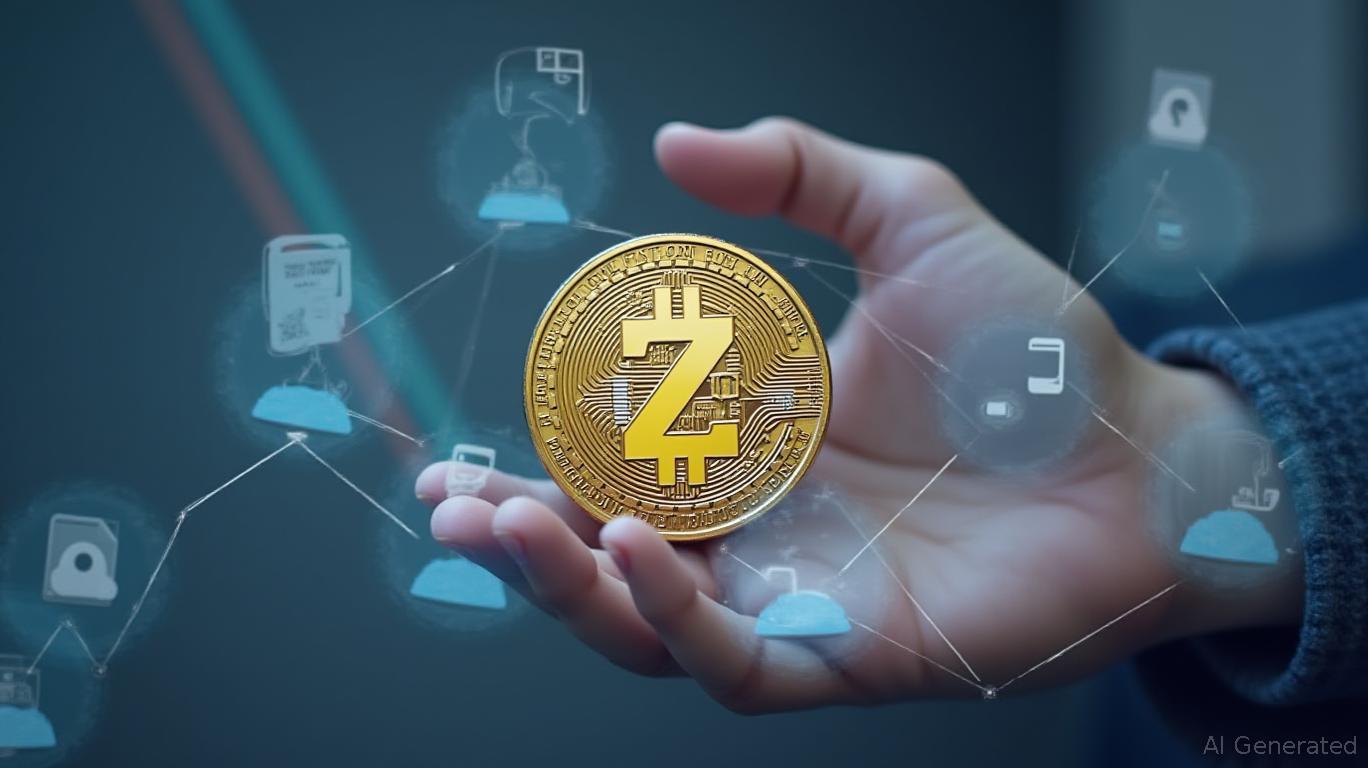Zelle Makes a Major Move Toward Stablecoins for International Growth—Will It Avoid Consortium Challenges?
- Zelle plans global expansion via stablecoins, leveraging its U.S. bank partnerships to enable faster, cheaper cross-border payments. - The initiative remains unclear on key details like unified token structure and foreign partners, despite $308B stablecoin market growth. - Regulatory clarity from the GENIUS Act and industry trends (e.g., JPMorgan's token plans) support banks' digital asset exploration. - Skeptics cite past failures like Fnality and coordination challenges among 2,500+ institutions as ris
Zelle, a digital payments platform based in the United States, has unveiled its intention to extend its reach beyond national borders by leveraging stablecoins, with the goal of mirroring its domestic achievements in international remittances. Early Warning Services, which operates Zelle and is owned by a consortium of banks, disclosed this plan on October 24. The company stated that stablecoins would make cross-border transactions quicker, more dependable, and less expensive, as outlined in
CEO Cameron Fowler highlighted that the expansion aims to deliver Zelle’s hallmark “trust, speed, and convenience” to users abroad, taking advantage of its current infrastructure and collaborations with leading U.S. banks such as

This announcement comes amid a surge in institutional interest in stablecoins, which have reached a total market value exceeding $308 billion, according to DeFiLlama and cited by
Despite the optimism, some critics are skeptical about Zelle’s ability to sidestep the challenges that have hindered previous banking consortium efforts. Analysts reference projects like Fnality—a 2019 attempt to tokenize fiat currencies for international settlements that ultimately failed—as examples of the difficulties large institutions face when adopting blockchain, as mentioned in Yahoo Finance’s analysis. Coordinating thousands of banks and credit unions, each with their own compliance requirements, remains a major obstacle. Still, Zelle’s extensive network, which includes 2,500 financial institutions, gives it a strong position in the changing payments sector.
The outcome of this initiative will hinge on how well Zelle can incorporate stablecoin solutions into its existing system. If successful, this could drive broader stablecoin adoption among established financial entities and transform the landscape of international payments. For now, the financial industry is watching closely as Zelle embarks on its global expansion journey.
Disclaimer: The content of this article solely reflects the author's opinion and does not represent the platform in any capacity. This article is not intended to serve as a reference for making investment decisions.
You may also like
Bitcoin Updates Today: Institutions Wager on Bitcoin's Surge to $200K as Trade War Drives Market Fluctuations
- Bitcoin faces $100K short-term dip amid U.S.-China trade tensions, with Standard Chartered predicting a $150K–$200K rebound by year-end driven by ETF inflows and economic tailwinds. - Trump's 155% tariff threats and $19B liquidation event triggered 4.5% Bitcoin drop, mirroring historical risk-asset sell-offs during trade disputes. - BullZilla ($BZIL) emerges as top 1000X crypto contender, with 2,738% ROI potential from $0.00018573 presale price amid structured burn mechanisms and staking incentives. - Go

VELO’s NASDAQ Strategy: Enhanced Liquidity or Algorithmic Hazards
- Velo3D (VELO) migrated to NASDAQ on August 19, 2025, seeking higher liquidity and institutional credibility amid OTC market volatility. - The move aligns with broader trends of firms exiting OTCQX to attract investors, as 47 companies joined the Composite Index in Q3 2025. - Commerce360's $5M retail payment initiative and Hagens Berman's AI-betting lawsuit highlight systemic risks in algorithmic markets affecting tech firms. - VELO's NASDAQ debut follows a bearish 2024 price pattern, with Q3 2025 perform

The Rise of Robots: Balancing Economic Efficiency and Employment Concerns
- Humanoid robots are transforming industries with operational costs as low as $10/hour, driven by automation advances and investor confidence. - Tesla's Optimus robot and China's Leju Robotics ($200M funding) highlight global competition, with Amazon deploying 1M+ warehouse robots for $4B annual savings. - DoorDash's autonomous "Dot" robot and AI-powered data center maintenance demonstrate robotics' expanding roles in delivery and infrastructure. - Robotics-as-a-Service models and $37.4B projected 2032 ma
B2 Airdrop’s Hourly Limit Reductions Discourage Bots and Promote Fair Participation
- Binance Alpha launched Phase 2 of its B2 token airdrop, requiring 225+ Alpha Points with hourly threshold reductions if unmet. - Users must spend 15 Points to claim 16 B2 tokens, but claims expire after 24 hours without confirmation. - The dynamic system aims to prevent bot activity while promoting B2, a decentralized data infrastructure under Binance's ecosystem. - This aligns with Binance's strategy to expand DeFi offerings and maintain control over token distribution fairness.
